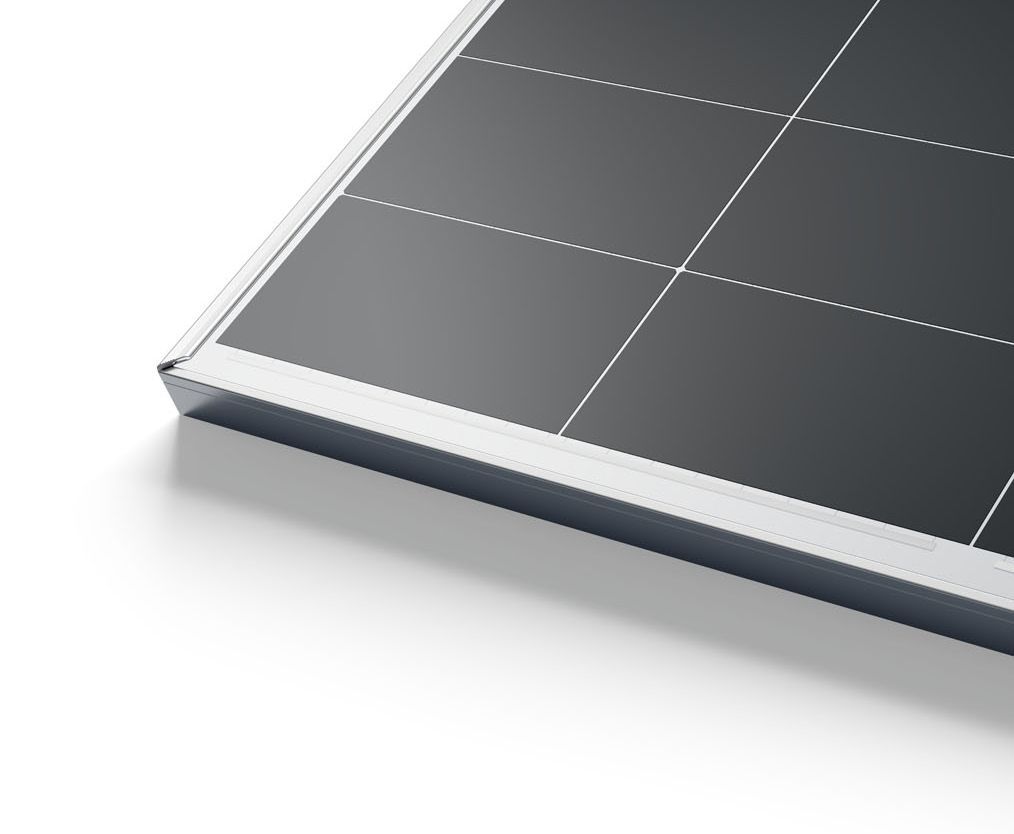LONGi, a leading solar technology company, today launched its new module innovation “Guardian Anti-Dust" as part of the Hi-MO X6 Max back contact series at Intersolar 2024. The Guardian Anti-Dust is suited for the residential, as well as the industrial market (C&I) and features an anti-dust short end frame design that addresses the persistent problem of dirt accumulation on solar panels. It is designed to allow dust to naturally slide off the module under the influence of gravity and rainfall. 120 patents have been used in the design and development of Guardian Anti-Dust. Additionally, the module is equipped with LONGi’s new rectangular M11 wafer using the TaiRay Inside technology. The wafer provides significant improvements in module efficiency, degradation parameters and mechanical performance. The Hi-MO X6 Max Guardian Anti-Dust is available in 54 and 72 cells with a module efficiency of 23.3% and a maximum power output of 475 and 630 watts respectively. In Europe the module will be available in Q4 2024.

Sean McSorley, Senior Sales Manager UK & Ireland, said: “The Hi-MO X6 Max Guardian Anti-Dust is a result of extensive research and testing to ensure that the module remains clean and free of debris, thereby maximizing its performance and longevity, in particular in regions with heavy sand and dust loads. At the same time, it offers premium performance parameters which can be ascribed to both, LONGi’s back contact technology HPBC as well as the new TaiRay Inside technology.”
The Hi-MO X6 Max Guardian Anti-Dust module has undergone over 1000 reliability tests and over 500 days of field verification to ensure its durability and performance. In addition to delivering superior performance, the module also offers benefits such as reduced maintenance requirements and lower risk of panel damage.
Solving the problem of dirt and dust accumulation in an environmentally friendly way
Sean McSorley explained: “Many of our customers and installers feedbacked that dirt accumulation would be a great concern for solar panel owners leading to power loss and reduced performance. With the Hi-MO X6 Max Guardian Anti-Dust module, we have addressed this issue head on by redesigning the frame to minimize the risk of hot spots and dirt accumulation.”
The Guardian’s patented frame and advanced sealing techniques ensure durability and load capacity. In addition, the module prevents the obstruction of incident light, ensuring optimal power generation performance of the module.
The frame of the long sides of the module corresponds to the traditional parameters and can be mounted using standard clamps.
Key features of the Hi-MO X6 Max Guardian Anti-Dust module include:
- New frame design and assembly to reduce cleaning frequency.
- HPBC (Hybrid Passivated Back Contact) cells for outstanding efficiency up to 23.3%.
- Great low-light performance.
- Straight-line cell connections for enhanced reliability.
- Rigorous testing for high durability and performance in various weather conditions.
- Flexible clamping zones and bolt holes for easy installation.
The Guardian Anti-Dust Module is available with 54 and 72 cells, measuring 1800x1134x30mm and 2382×1134×30mm and weighing 21.6 kg as well as 28.5 kg respectively.
The 54-cell version offers a maximum power output of 475 watts, the 72-cell 630 watts providing high reliability and stable operation even under harsh conditions thanks to its highly efficient and powerful back-contact cell technology.
Sand deposits and dust storms reduce the module efficiency and power output by at least 30%
The accumulation of dust on photovoltaic panels is a natural phenomenon. However, accumulated dust can significantly reduce the performance of solar panels, although the results have not been clearly quantified. Several scientific studies support the prevailing expert opinion that the power loss due to Saharan dust, for example, can be as high as 30 percent. In regions with severe sandstorms, these losses are even higher.
Sean McSorley commented: "Sahara dust is not only found in the desert. Many people are familiar with its effects when traveling to Europe, mostly from dirty cars. But the effect of dust on solar panels in photovoltaic systems in general is even more significant. Dust shadowing not only changes the direction of light. It also reduces the light transmission of the glass pane, thereby reducing the efficiency of the photovoltaic system. Long-term dust shadowing also leads to the formation of ‘hot spots’, a local overheating, which can lead to the complete destruction of the photovoltaic module.”
Waterless cleaning of solar panels will be critical in times of water scarcity
In 2022, the WEF (World Economic Forum) estimated that cleaning solar panels with water would consume approximately 10 billion gallons of potable water per year worldwide. This would be enough to supply drinking water to up to 2 million people, too much to justify cleaning solar panels with water in the future.
"There are several research initiatives around the world looking at waterless ways to clean solar panels without causing irreversible scratches on the surfaces," said Sean McSorley. "The Guardian Anti-Dust is an important addition to these efforts. Because the Anti-Dust short side frame is in line with the glass, dust and mud can easily slide off or be washed off by rain, which is also known as the rainfall scouring effect. In addition, no sand or water residue is left behind. The same effect occurs with heavy snow loads.”
Links:
- LONGi Intersolar 2024 Presskit (photos and product datasheets)
- LONGi Intersolar 2024 Website
- Module testing: https://youtu.be/-BJaTFenMP8
- Module frame testing: https://youtu.be/an6KlVvLjkM
- Module testing snow: https://www.youtube.com/watch?v=dnpLQLZuP0Q
Press Contact
Nadine Bütow
Head of European Communications (DG)
Timo Helmke
PR Manager Europe (DG)